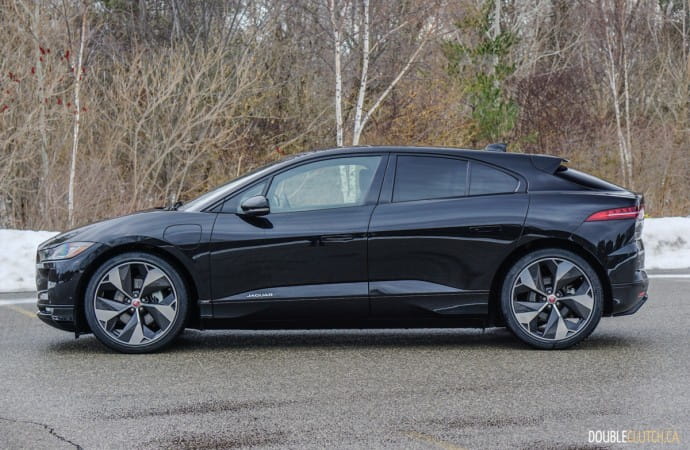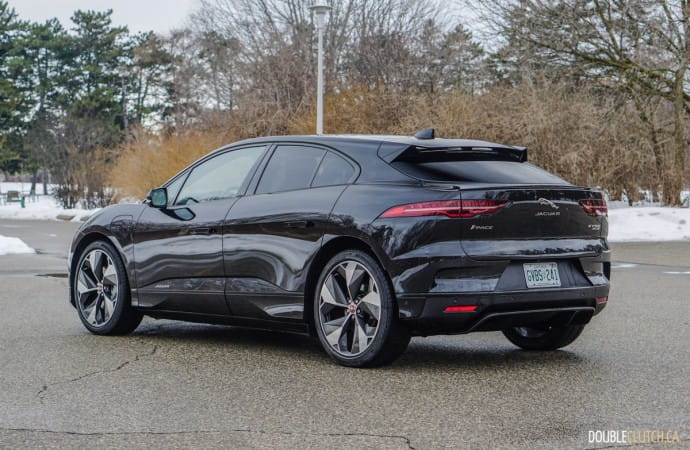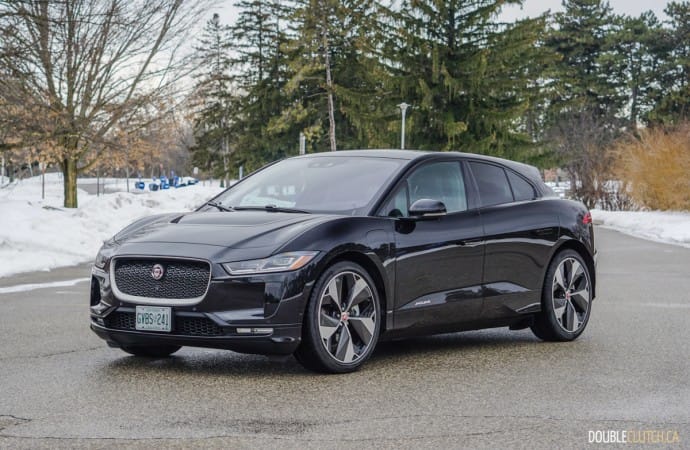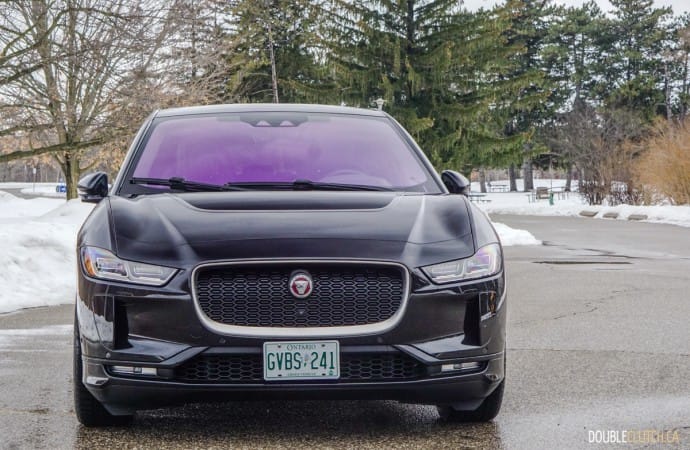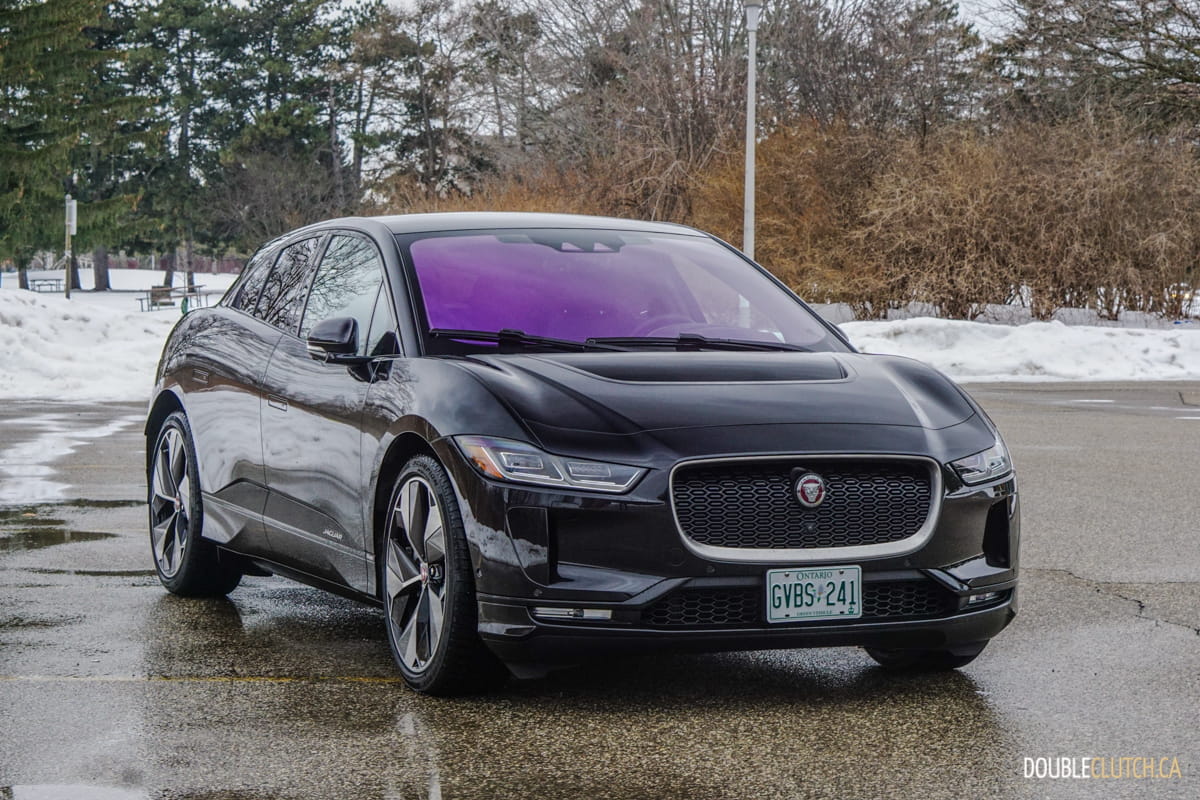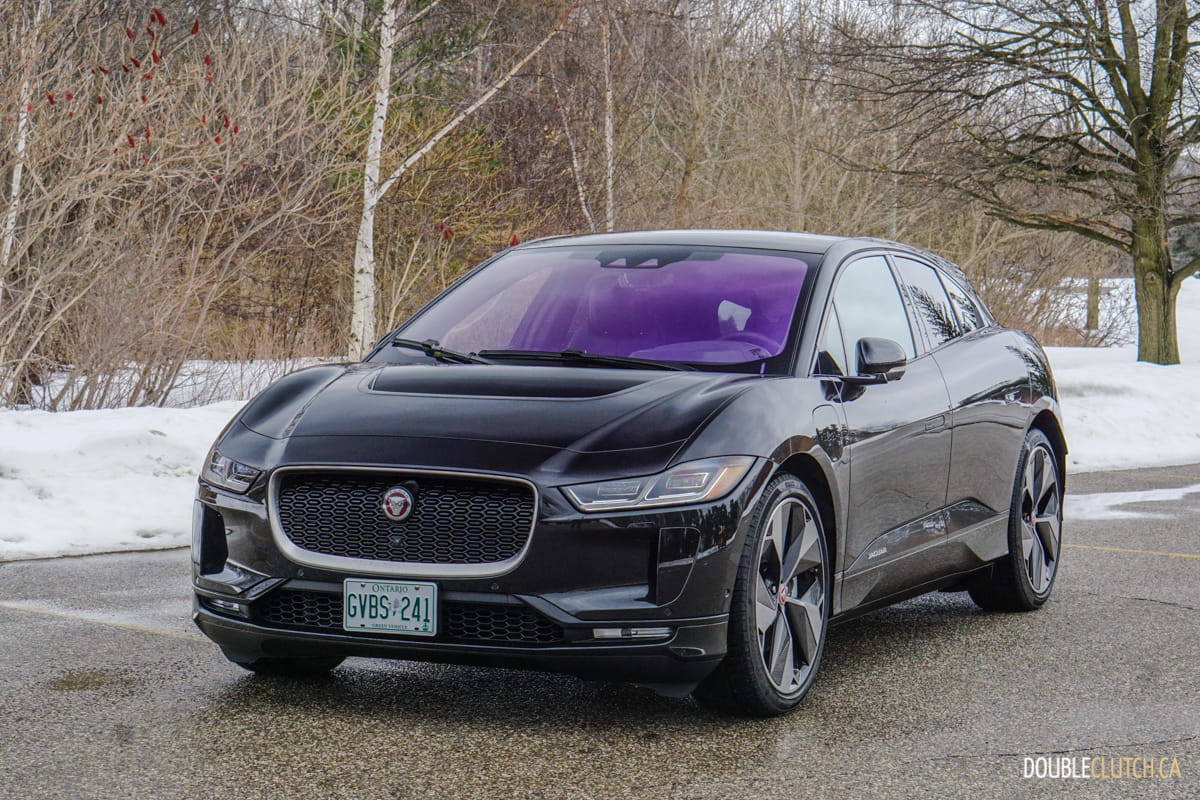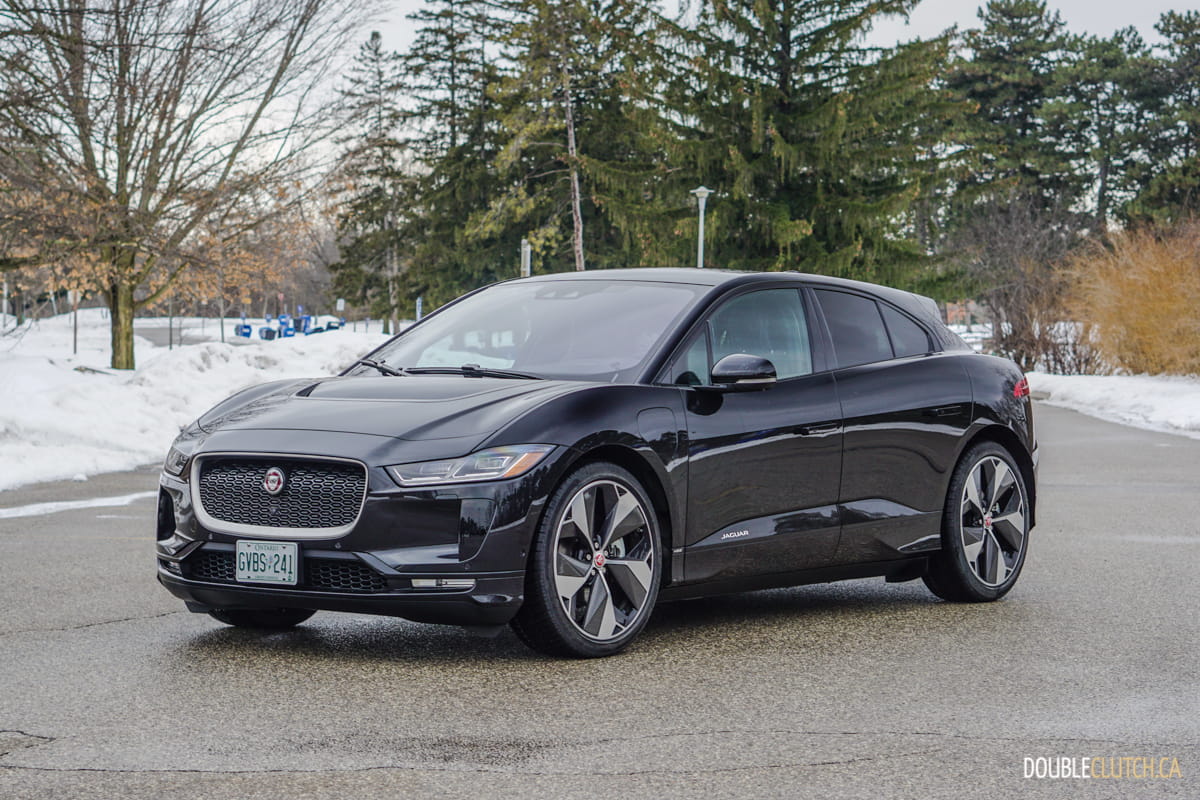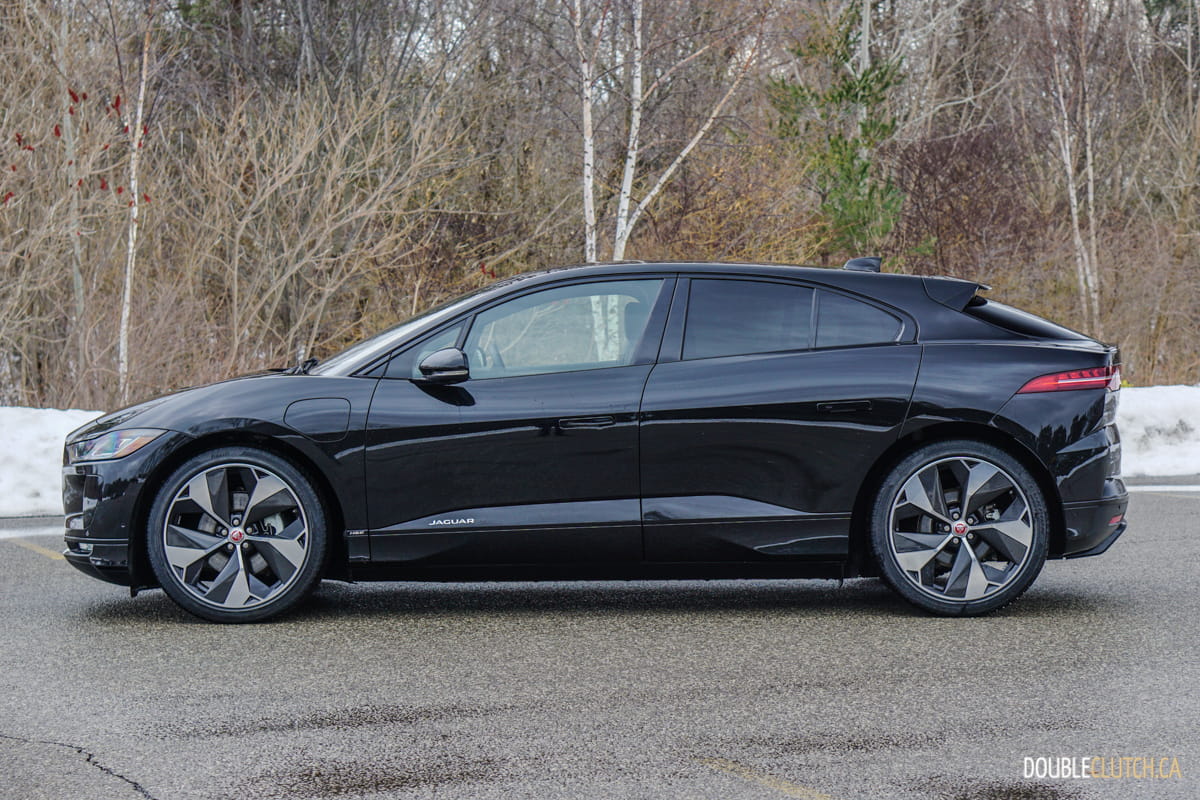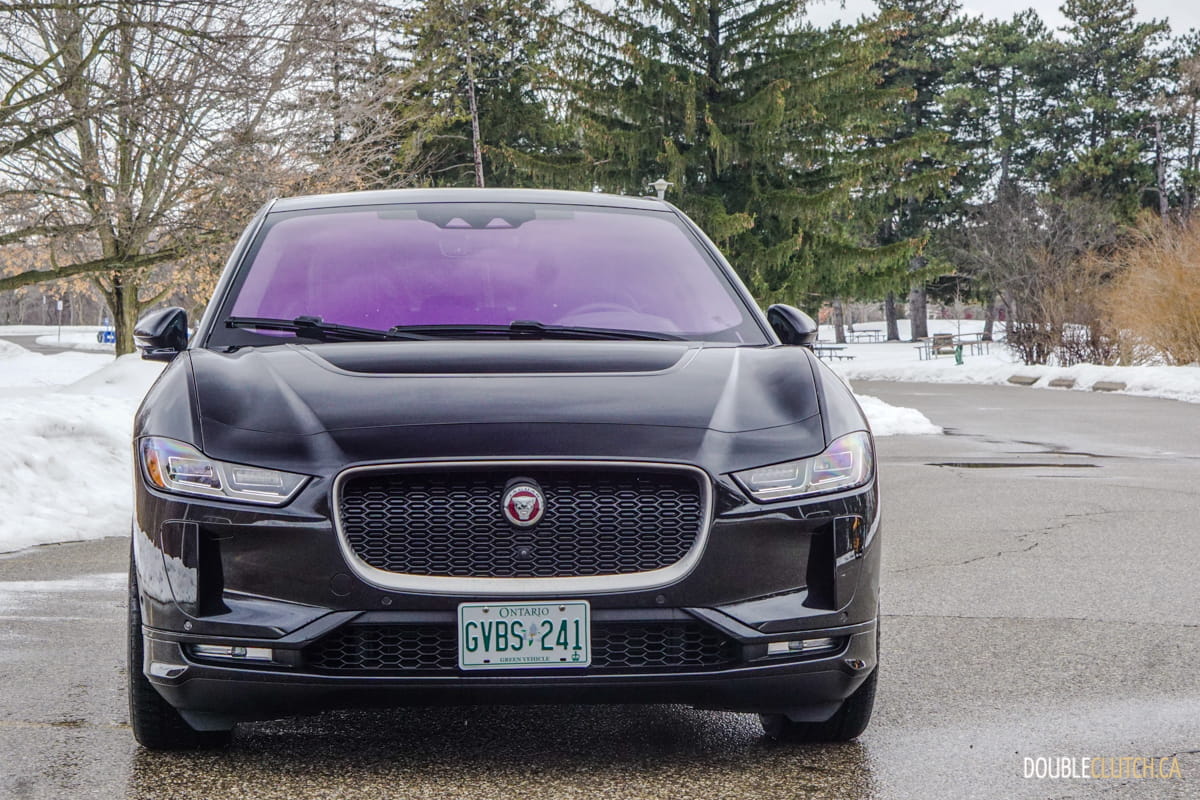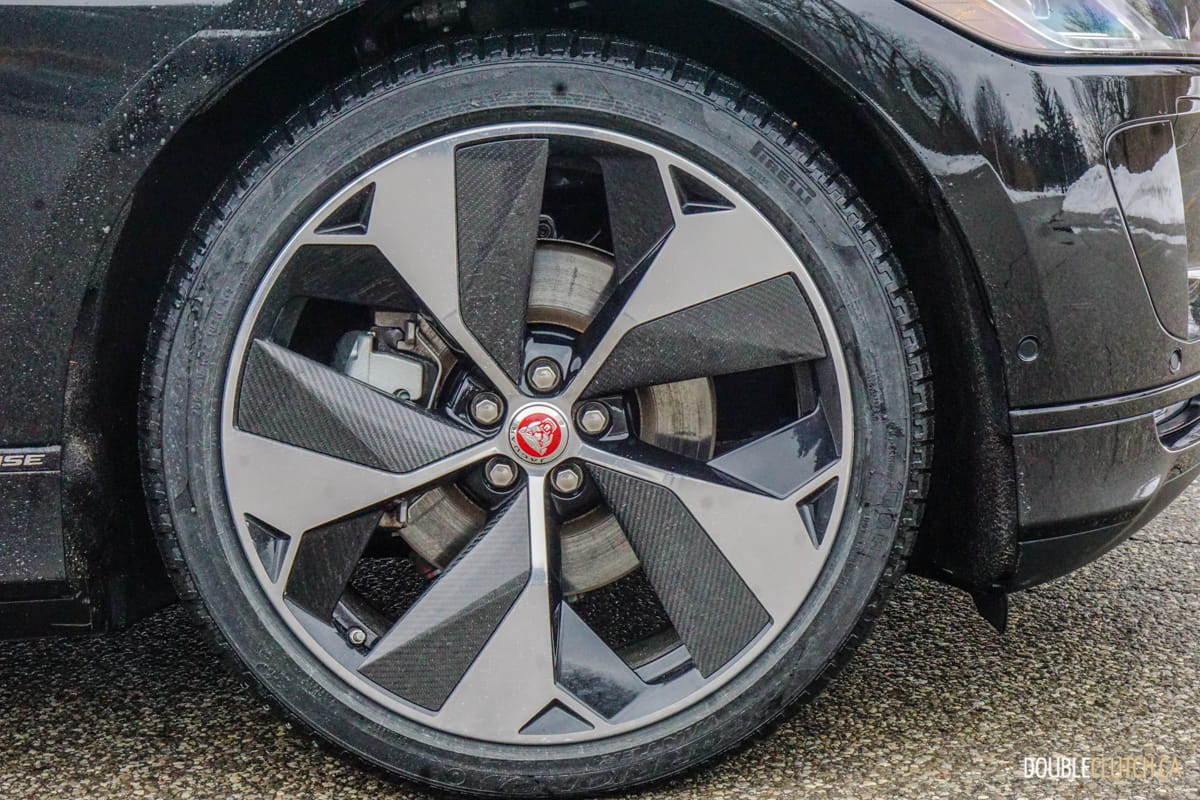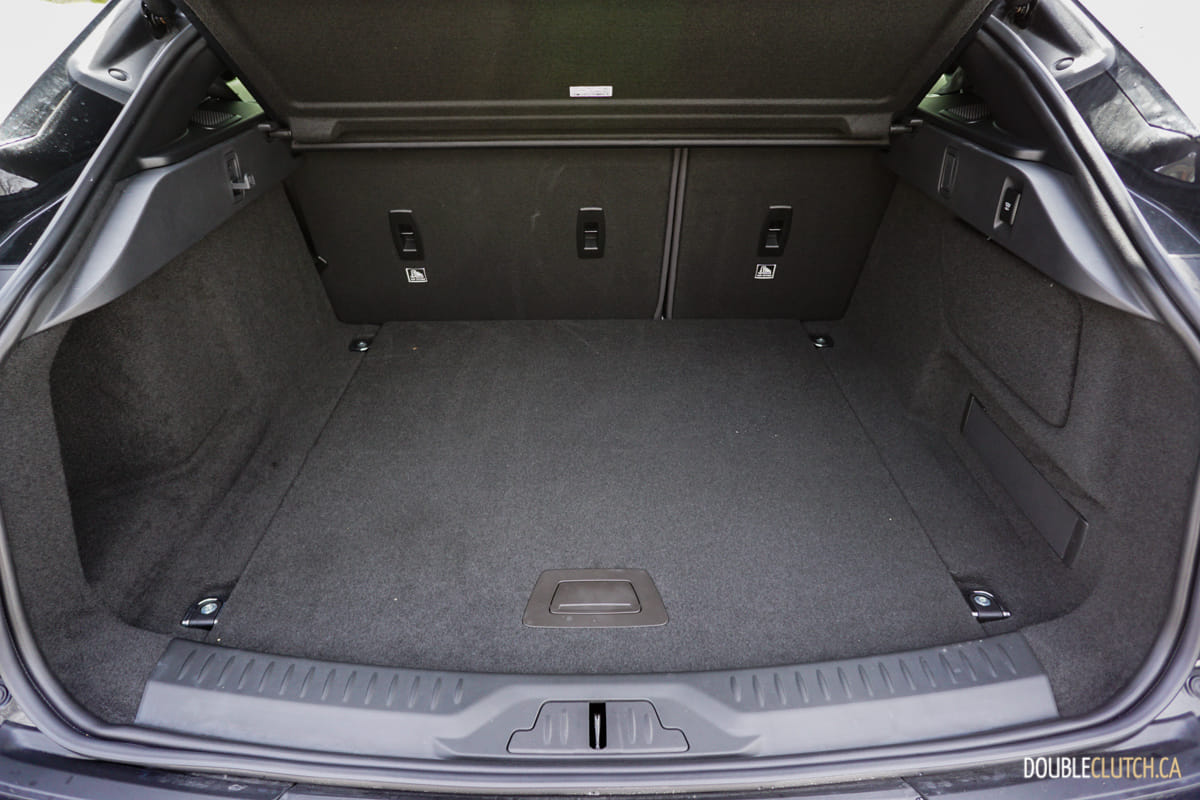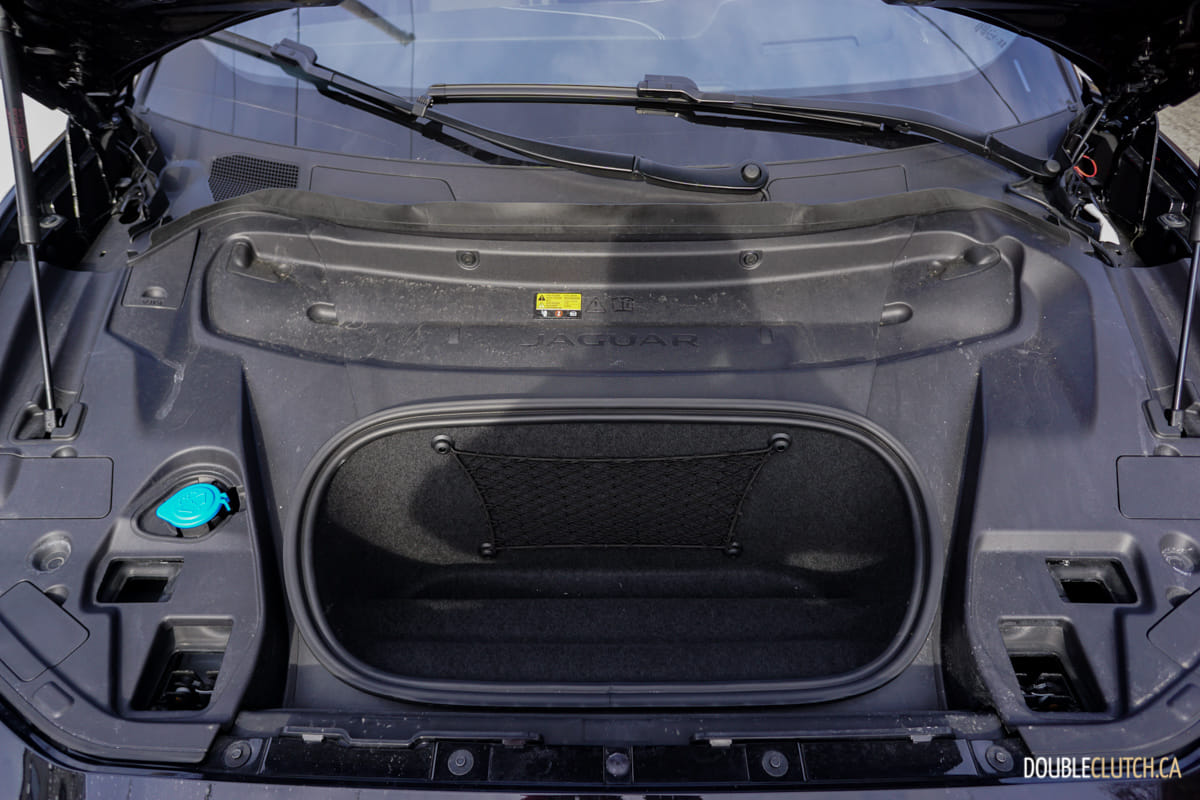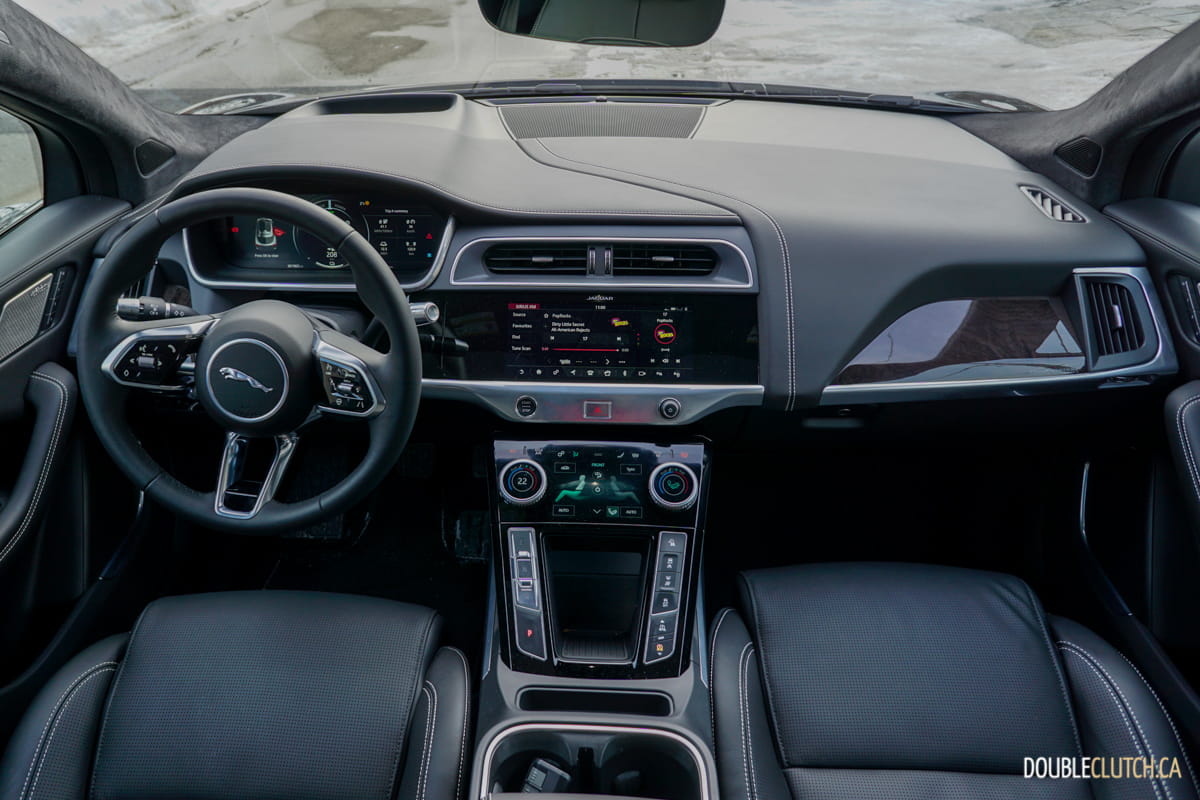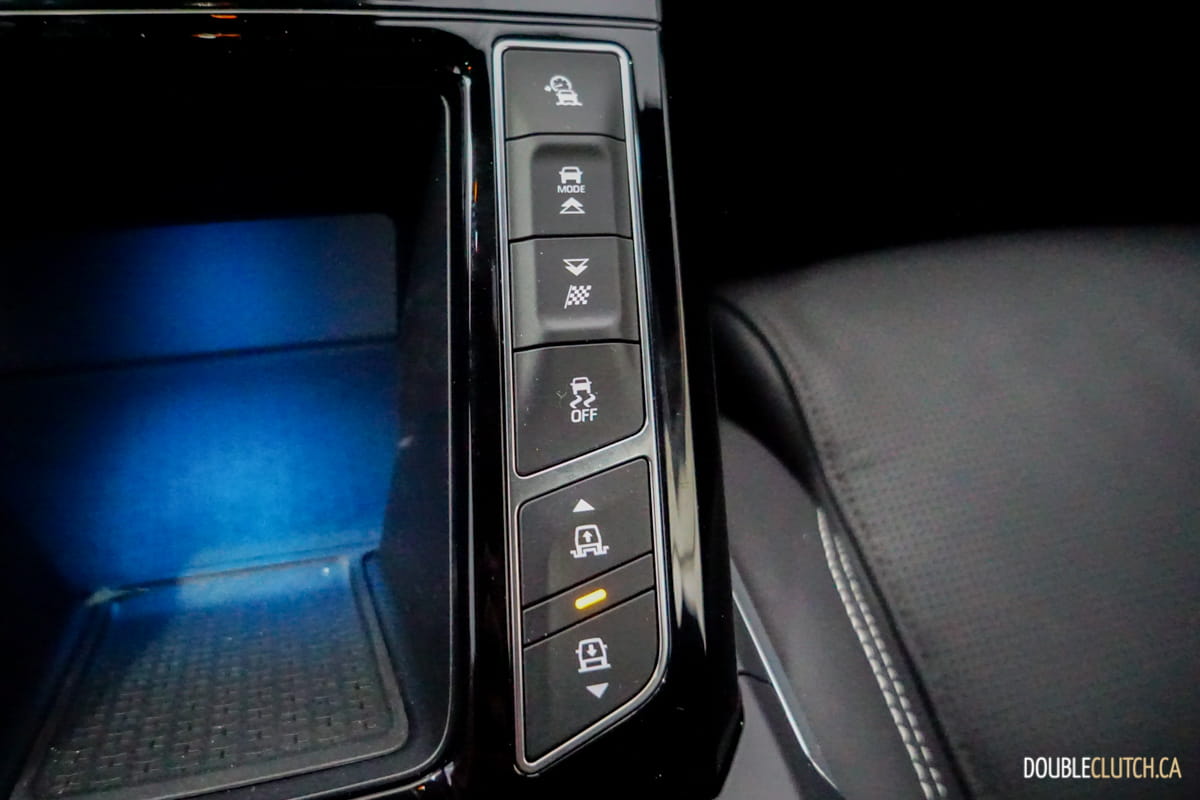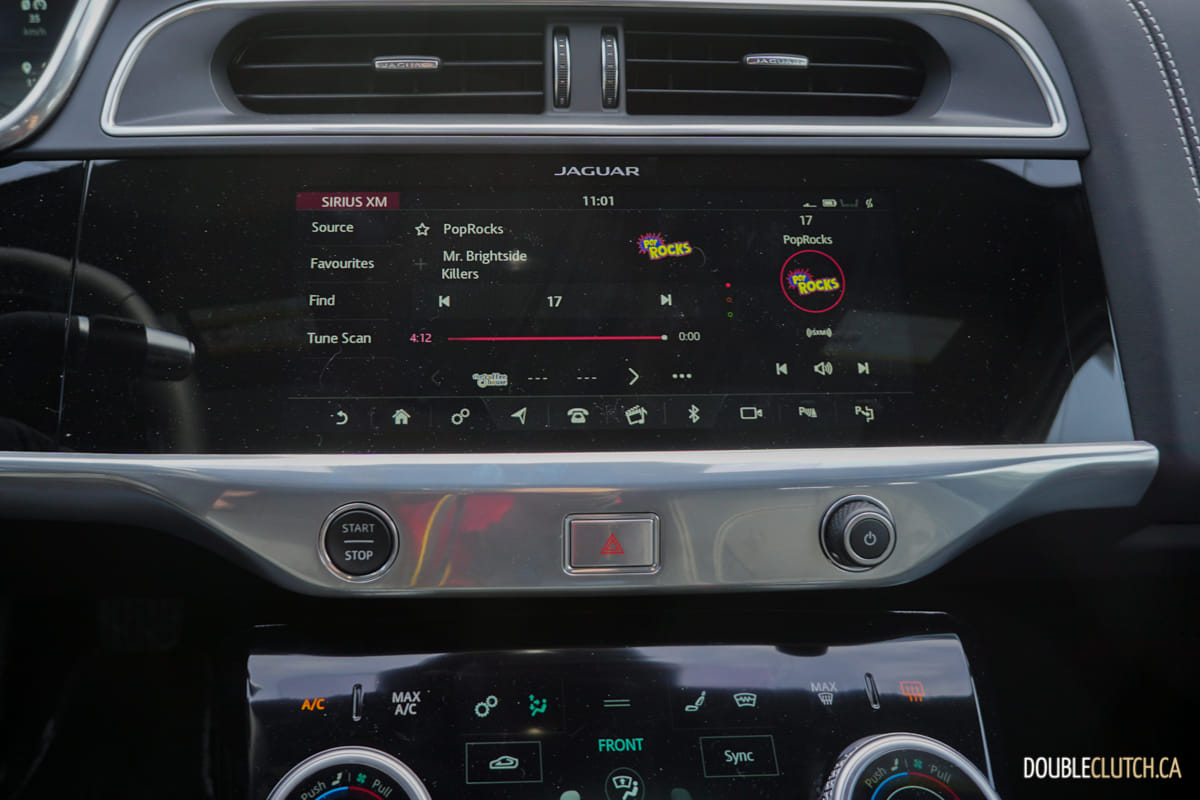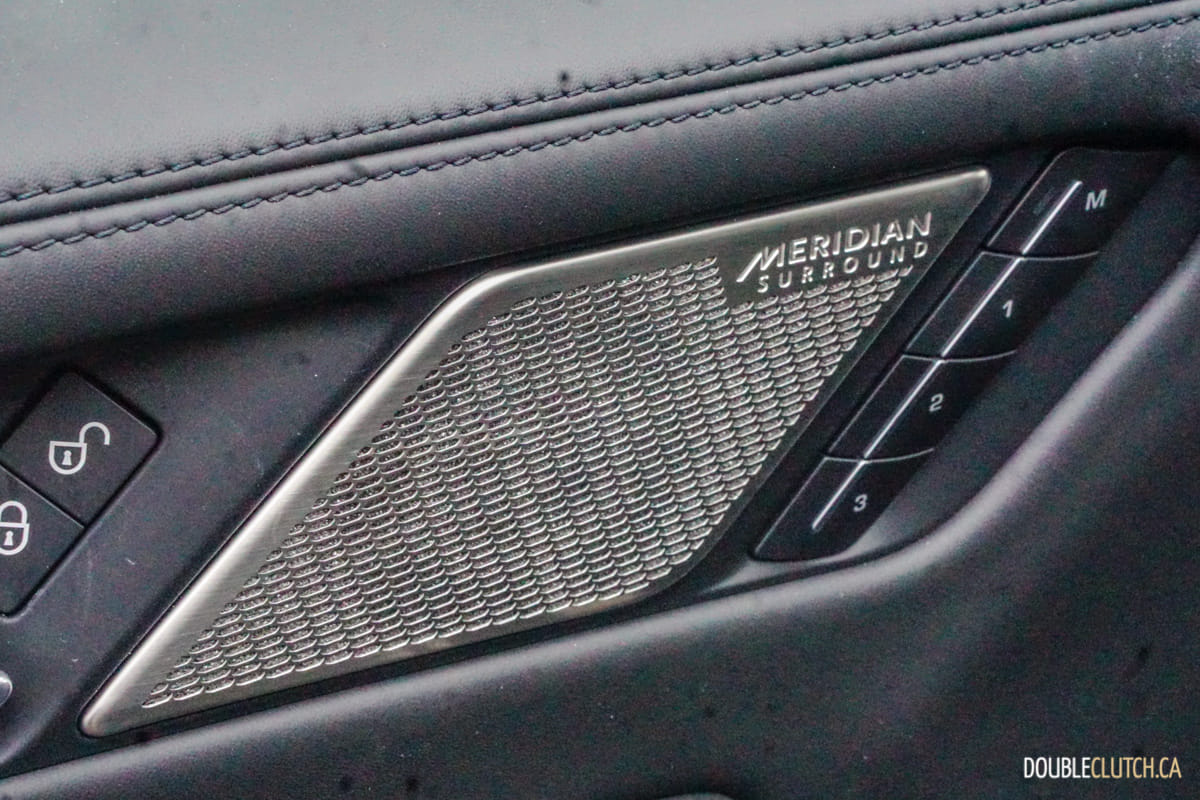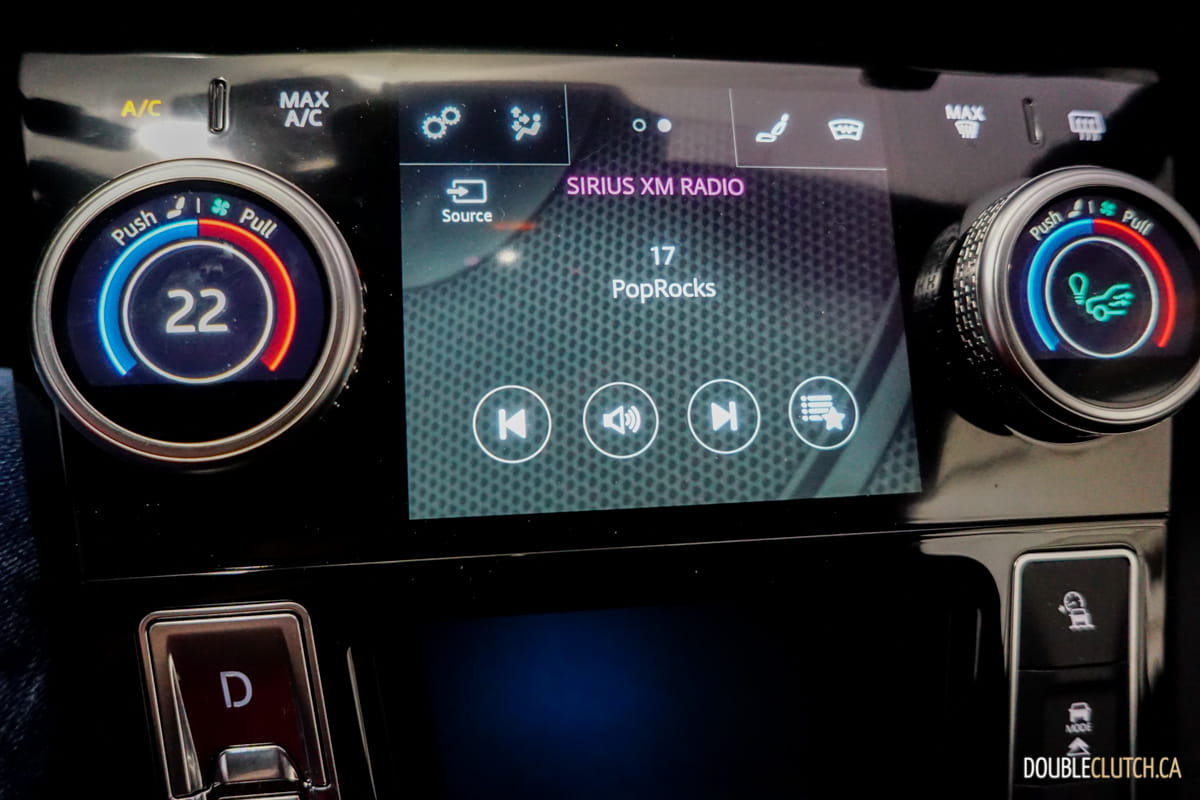Electric cars have been on the market for several years now, and the fast vehicle charging network has become well established enough that range anxiety is significantly less of an issue than it used to be. With such an established EV network in place, Jaguar decided it was time to introduce their own Tesla-fighting premium EV to the market. The specific example tested here is the brand new, all electric 2019 Jaguar I-PACE EV400 HSE First Edition.
Building a car around an EV-only platform allows manufacturers to do things differently than they would in a conventional gasoline-powered vehicle, and that’s part of what gives the I-PACE its unique shape. Designed in a very similar manner to the Tesla sedans, the 90kWh battery makes up the entire floor of the vehicle, and an electric motor is placed at the front and rear of the vehicle between each set of wheels. This design places the wheels pretty close to each end of the car, maximizing interior space while providing very little overhang past the nice, long wheelbase.
With three standard trim levels available on the I-PACE, the HSE tested here comes out on top with a starting MSRP of $96,500. Our test vehicle had a few nice additions to it, like the Cold Climate Pack (heated steering wheel, heated windshield and heated washer jets – $550), Adaptive Dynamics, Black Exterior Pack, Front Fog Lights, Activity Key, and Adaptive Surface Response, for a total as-tested sticker of $101,510.
The interior of the I-PACE is beautiful, a wonderful mix of aluminum and leather, with wood grain accents in the doors that have a nice depth and pattern to them. Digital screens throughout provide a ton of relevant information to the passengers with graphical designs expected on a premium vehicle like this. The gauge cluster in front of the driver is split into three sections: the left and right sides can be customized to display a number of items such as navigation or radio information, while the middle is dedicated to a large ring showing battery usage/charge information as well as the speedometer.
In the center stack, there is a very wide 10” screen serving as the infotainment hub, while below that is a smaller 5” screen generally dedicated to HVAC controls, although it can be used to show other things as well, such as multimedia settings. Each seat has its own knob with a built-in screen to control the climate control; pushing down on the knob will switch the screen over to seat heating/cooling controls. Up front for the driver is a vivid heads-up display that outlines road and speed information.
Our biggest gripe with all of the screens and technology in the I-PACE comes with the boot speed and response time. If the car has been parked for a while, the infotainment system may enable a sleep mode and take a few minutes to fully start. This comes at the expense of losing the use of the 360-degree cameras. When leaving the garage in the morning after giving the vehicle a minute to collect itself, the backup camera kicked on after we had already exited the garage and travelled the entire length of the driveway. Thankfully there are parking sensors surrounding the entire vehicle that do work at all times, with an incredibly loud alert beep.
Thanks to the in-floor battery pack, wide stance and maxed-out wheelbase, the interior of the I-PACE feels very roomy. The full glass panoramic roof also allows for plenty of head room and great views for all passengers. The rear seat is comfortable for two full-sized adults, and there is a very small hump in the floor for the middle seating position, much smaller than most rear or all-wheel-drive cars have.
For the 2019 model year, there is only one powertrain available, and the 90kWh battery pack is the only option. As battery technology is always improving, expect that future model years might start to see larger power packs. The 90kWh pack is rated for up to 377 km on a single charge, however with winter and city driving, along with not trying to squeeze every last meter of range out of the battery, we never saw the range gauge read more than 285km. This is still pretty great for such a large, high-horsepower EV.
The I-PACE comes with a 120V home charger, but as with all EVs you will want to get a faster charger installed in your home and use this charger as a last resort. The 120V charger can take several days to fully charge the vehicle, while a quick pit-stop with a fast charger can have you on your way in minutes. Should you require cargo space, the I-PACE will hold a generous 716L of stuff behind the rear seats, and if you fold them down, this expands to just over 1440L. There is a small storage cubby in the front of the car as well, which can hold a small backpack or the charging equipment.
The two motors combined can pump out a maximum of 394 horsepower, and a throw-you-back-in-your-seat 512 lb-ft. of torque available from a dead stop. Mashing the accelerator pedal will launch the I-PACE from 0-100km/h in just 4.8 seconds, but the torquey thrill makes it feel even faster than it actually is. Thanks to grippy tires, AWD, and Jaguar’s Adaptive Surface Response (AdSR) system, the I-PACE feels glued to the ground at all times, even when driving down a snow or ice-covered street.
The I-PACE isn’t just all fun and games in a straight line, either. The low center of gravity provided by the battery pack makes it a fantastic runner in the corners. Adaptable steering and adaptive suspension means that choosing a different driving mode and ride height can give the I-PACE driving dynamics to suit your preferences or the specific situation.
If you are trying to figure out if the I-PACE is more of a sedan or a CUV, the answer is that it’s really both. The vehicle is equipped with an electronic air ride system that has significantly more travel than most other vehicles out there. The off-road ride height jacks the car up a maximum additional 230mm and can give it an SUV-like stance. It can actually stay there until you are hitting highway on-ramp speeds. At the opposite end of the spectrum, the low height setting helps with aerodynamics while also getting that center of gravity even lower, for more cornering fun.
The 2019 Jaguar I-PACE EV400 HSE is a beautiful piece of machinery that can give a fully loaded Tesla Model 3 (reviewed here) a run for its money, with further competition coming soon to the EV market from the Audi E-tron and Mercedes-Benz EQC. The I-PACE has also earned itself the Canadian Utility of the Year award from the Automotive Journalists’ Association of Canada. With an interior that focuses more on craftsmanship and passenger comfort over embracing its EV lineage, the I-PACE stacks up against plenty of six-figure gas-powered hybrid sedans and CUVs as well while passing them all by at the pump.

